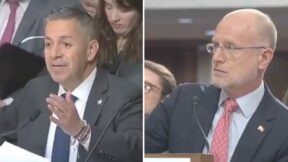YouTube Invests in Progressive Outlet Young Turks to Promote Local News. But Why?
YouTube is investing in the progressive digital outlet The Young Turks to promote local news, Axios reported on Tuesday morning — part of a broader initiative in which Google, which owns YouTube, has pledged to commit $300 million to the news industry by 2021.
The investment — “in the mid-six figures range,” according to Axios — will help The Young Turks launch a series of free instructional videos on journalism and digital video production that viewers can watch to improve their local reporting skills. The videos are part of a new two-track program called TYT Academy that is now in a trial period but will go live in June.
Each track, according to a YouTube video introducing the program, will include about eight classes. The journalism classes, for instance, will focus on such topics as beats, research, public documents, sources, writing, editing, law, ethics and shooting. At the end of the classes, viewers will take a final exam in order to receive a certificate.
Those who are familiar with The Young Turks, which has 4.64 million YouTube subscribers and is most well-known for its left-leaning political commentary, might be wondering why it is positioning itself as an arbiter of local news production — and why YouTube is paying it to do so. (Though conservatives called out the investment Tuesday as evidence of bias on Google’s part, YouTube has also invested in Fox News — which, like The Young Turks, applied to receive support through the same program.)
“There’s a massive void in the area of digital-first local news,” Cenk Uygur, The Young Turks’ founder, explains in a video introduction to TYT Academy. “And we do that primarily through the power of digital media. However, local news has almost no digital video presence. That’s why we’re calling on you to redefine local news.”
It is, at first glance, a noble goal, but it feels somewhat misguided — and misses the reason why there is a void in the first place. Local newspapers — more than 1,800 of which have disappeared since 2004, according to a definitive study — are not imperiled because reporters don’t know how to post videos to YouTube. They’re endangered, in large part, because Google and Facebook control the vast majority of the digital advertising industry, siphoning away revenue that used to keep the news industry comfortably afloat.
Local news doesn’t need to be redefined; it needs money.
Uygur doesn’t mention local newspapers in the video — it seems, from the tentative details, that he has it in mind to promote a sort of amateur citizen journalism that The Young Turks can then perhaps amplify on its channels.
“We want to do our part to amplify the best voices out there,” Uygur says. “TYT Academy is excited to help remake local news with a new generation of journalists — anchors, reporters, analysts, movie reviewers, food and restaurant reviewers, sports commentators and political commentators. Future colleagues, we look forward to changing local news with you.”
But it is unclear why anyone would need to take an eight-part video course in order to review movies or restaurants — or how these videos will help change local news, which already has its fair share of anchors and commentators.
While the videos have yet to be released, the tentative details of the program leave something to be desired, said Fred Bayles, author of “Field Guide to Covering Local News: How to Report on Cops, Courts, Schools, Emergencies and Government,” and professor emeritus at Boston University’s College of Communication.
For one, he told Mediaite, you don’t need any sort of formal education — or certification — to be a good reporter. (Journalists have always prided themselves on this fact, despite the vast number of journalism schools that exist in the United States.) Video news, Bayles added, is also not the highest form of journalism, as it is often uninformative and lacks context — even at the network level.
And then there are the issues associated with citizen journalism.
“The problem I have with raw citizen journalism is the lack of filters,” Bayles told Mediaite in an email. “I’m not simply speaking about an extra set of eyes checking for political or ideological prejudices. News reports succeed when they go through someone — they used to be called editors — who have gone through the process of learning by their — and others — mistakes. Those ‘editors,’ as some of us still call them, can spot problems such as dogma, inconsistencies, contextual sense and necessary questions that remain unanswered. There is a whole lot of damage that can be done by inexperienced journalists that have nothing to do with political viewpoint.”
For its part, The Young Turks is — separate from the YouTube initiative — now investing in reporting to go along with its commentary, reminiscent of an effort at Sinclair Broadcast Group, the right-wing local news and commentary purveyor, which recently announced that it would dedicate resources to local investigative reporting.
The Young Turks is looking to hire both full- and part-time investigative reporters, according to its careers portal. The listings for each are basically the same, but the full-time position is focused on climate change. Reporters, according to the company, “will be expected to write a mix of entrepreneurial, long-form deep dives, and reactive, quick-turnaround topical short pieces,” focusing on campaign finance, political influence and corporate malfeasance, among other things.
While it is commendable that the Young Turks is investing in at least one full-time investigative reporter, as any working journalist knows, “part-time investigative reporter” is a bit of an oxymoron. Investigative journalism is an intense, time-consuming affair — and would seem to require full-time employment so that reporters have the resources and institutional support to keep digging.





Comments
↓ Scroll down for comments ↓